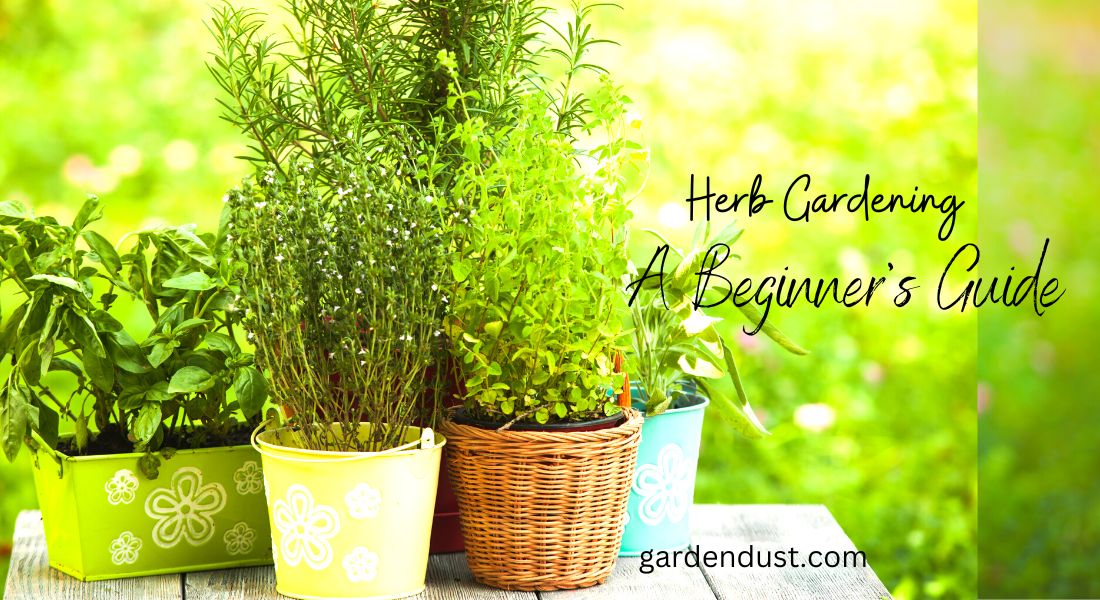Herb gardening is a fantastic way to add fresh, flavorful, and healthy ingredients to your cooking while also providing a beautiful and fragrant addition to your outdoor space. Whether you’re a seasoned gardener or a beginner, starting an herb garden is a fun and rewarding experience that anyone can enjoy. In this beginner’s guide, we’ll explore the basics of herb gardening, including how to choose the right location, soil, and herbs, as well as how to care for your garden and harvest your herbs for the best results.
Choosing the Right Location
The first step in starting an herb garden is choosing the right location. Herbs need plenty of sunlight, so it’s essential to choose a spot that receives at least six hours of direct sunlight per day. If you don’t have a sunny spot in your yard, consider planting herbs in containers and moving them to different locations throughout the day to ensure they get enough light.
In addition to sunlight, herbs also need well-draining soil to thrive. Avoid planting herbs in areas with heavy clay soil or where water tends to pool. If your soil is heavy, amend it with organic matter such as compost or aged manure to improve drainage.
Selecting the Right Herbs
The next step is choosing the herbs you want to grow. There are many different types of herbs, including culinary herbs such as basil, thyme, and parsley, as well as medicinal herbs like echinacea and chamomile. Consider the types of dishes you like to cook and the herbs that would complement those flavors. For example, if you love Italian cuisine, you may want to plant basil, oregano, and thyme. If you enjoy tea, consider growing chamomile, lemon balm, and peppermint.
When selecting herbs, it’s important to consider the climate in your area. Some herbs, such as basil and cilantro, prefer warm temperatures and will not thrive in cooler climates. Other herbs, like thyme and rosemary, can tolerate colder temperatures and may even overwinter in some regions.
Preparing Your Soil
Before planting your herbs, it’s important to prepare your soil properly. Start by removing any weeds or debris from the area where you plan to plant. If your soil is compacted, loosen it with a garden fork or tiller. Then, add organic matter to your soil to improve its structure and fertility. Good options include compost, aged manure, or peat moss.
Planting Your Herbs
Once your soil is prepared, it’s time to plant your herbs. Before planting, read the instructions on the seed packets or plants you’ve purchased to determine the recommended spacing for each herb. In general, herbs should be planted at least 12 inches apart to allow room for growth.
If you’re planting seeds, sprinkle them over the soil and cover lightly with a thin layer of soil or vermiculite. If you’re planting transplants, dig a hole that’s slightly larger than the root ball and gently remove the plant from its container. Place the plant in the hole and backfill with soil, pressing lightly to ensure the plant is secure.
Caring for Your Herb Garden
Once your herbs are planted, it’s important to care for them properly to ensure they grow healthy and strong. Here are a few tips for caring for your herb garden:
Water regularly: Herbs need consistent moisture to thrive. Water your garden regularly, keeping the soil moist but not waterlogged. Be careful not to overwater, as this can lead to root rot.
Fertilize as needed: Herbs generally do not require a lot of fertilizer. However, if your soil is poor or your plants appear stunted or yellow, you may need to fertilize. Use a balanced fertilizer, applying according to the instructions on the package.
Mulch around plants: Mulching around your plants can help retain moisture in the soil and prevent weeds from growing. Good options for mulch include straw, shredded leaves, or wood chips.
Prune regularly: Pruning your herbs will encourage bushier growth and prevent them from becoming too leggy. For most herbs, it’s best to pinch back the tips of the plant when they reach a height of six to eight inches. This will encourage the plant to branch out and produce more foliage.
Protect from pests: Herbs can be susceptible to pests such as aphids, mites, and whiteflies. If you notice signs of pest damage, such as yellowing or distorted leaves, take action to control the pests. You can use natural remedies such as insecticidal soap or neem oil, or opt for chemical insecticides as a last resort.
Harvesting Your Herbs
As your herbs grow, you’ll want to harvest them regularly to encourage continued growth and ensure the best flavor. Here are some tips for harvesting different types of herbs:
- Culinary herbs: For culinary herbs such as basil, parsley, and thyme, harvest the leaves as needed. You can harvest up to one-third of the plant at a time, taking care not to remove too much foliage at once. For best flavor, harvest herbs in the morning after the dew has dried.
- Medicinal herbs: For medicinal herbs such as echinacea and chamomile, harvest the flowers and leaves when they are at their peak. Be sure to research the specific plant to determine the best time to harvest for maximum potency.
- Woody herbs: Woody herbs such as rosemary and sage can be harvested year-round, but it’s best to wait until they are established before harvesting. To harvest, simply snip off a few branches and use as needed.
Starting an herb garden is a fun and rewarding experience that can provide you with fresh, flavorful herbs for cooking and a beautiful addition to your outdoor space. By choosing the right location, soil, and herbs, caring for your garden, and harvesting your herbs properly, you can enjoy a bountiful harvest of fresh herbs throughout the growing season. Whether you’re a seasoned gardener or a beginner, herb gardening is a great way to connect with nature and enjoy the benefits of fresh, homegrown herbs. Happy gardening…..






